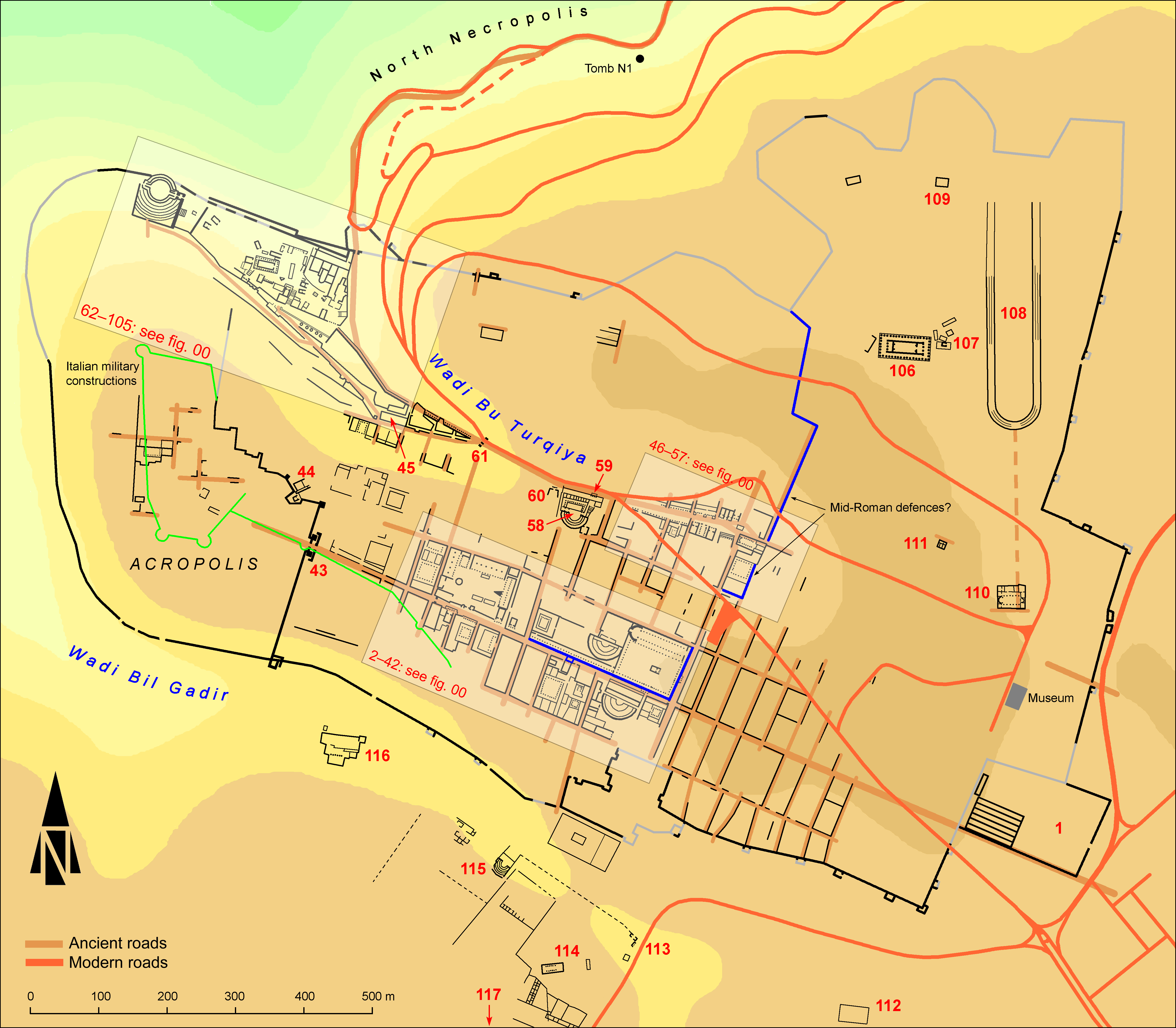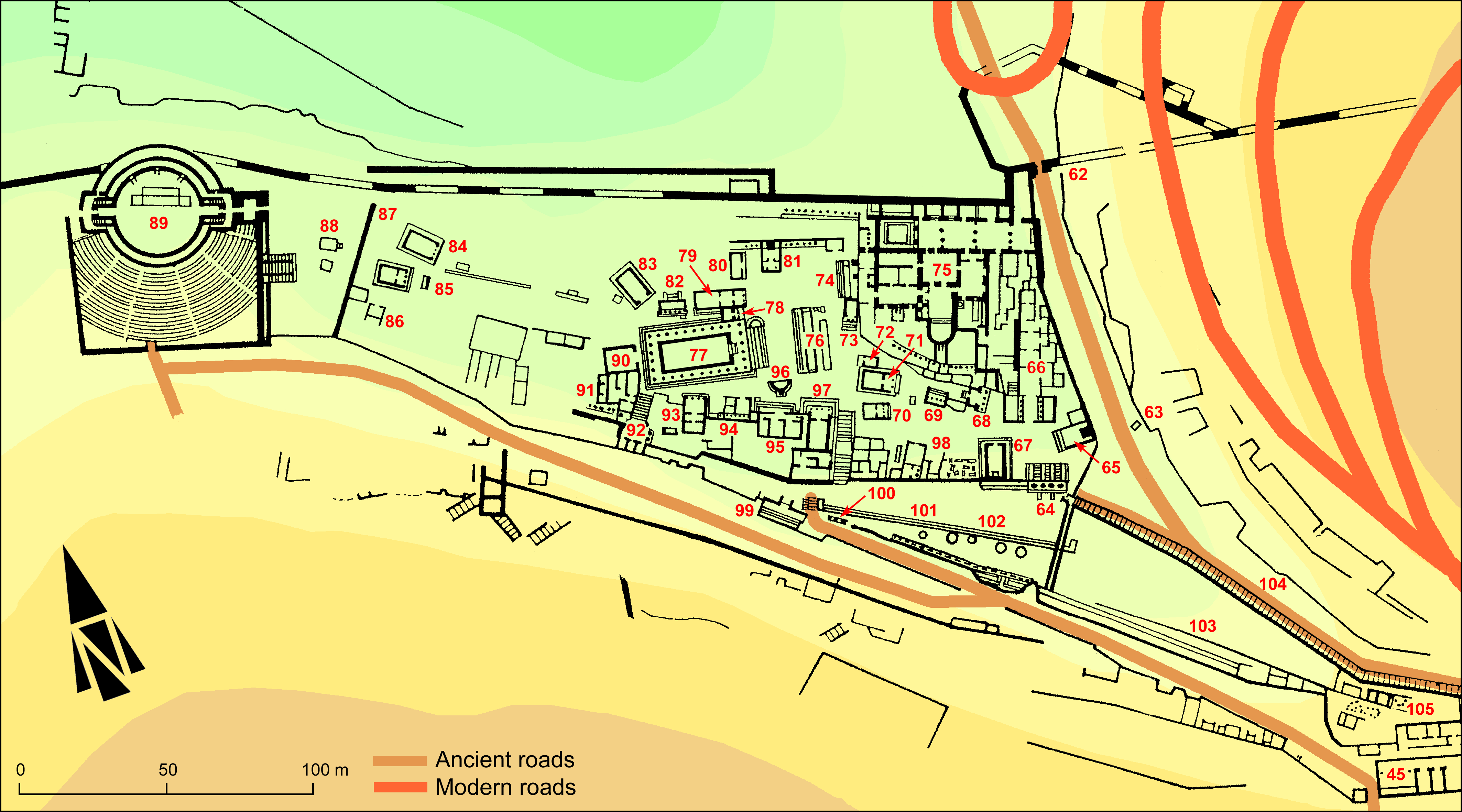EpiDoc XML:
GVCyr0392
Trismegistos ID:
738932
Source description
Support: Lead tablet, unrolled after discovery
(dimensions unknown).
Layout: Inscribed on one face in 10 lines.
Letters: Height unknown; still slightly slanting mu and sigma, xi with central hasta.
Date: Probably third century BC (lettering).
Findspot: Found in 1930 at
Cyrene ➚: in the excavations of the
Fountain Terrace.
Place of origin: Findspot.
Last recorded location:
Probably lost.
Text constituted from: Transcription from previous editors.
Bibliography
SECir, 193; Pugliese Carratelli 1963; Gallavotti 1963, pp. 450-454; Dobias-Lalou, BE, 1964.574; Pugliese Carratelli 1964, pp. 102-105; Faraone 1995, pp. 6-8, whence SEG, 45.2168; GVCyr 039 ➚. Cf. Jordan 1985, p. 187; L. Gasperini in Bonacasa – Ensoli 2000, p. 34 (Italian translation), whence SEG, 50.1635; Pocetti 2007, whence SEG, 57.2027; Luni 2014, p. 133 (report of the 1930 excavations); Dobias-Lalou 2014, pp. 322-323 (French translation), whence SEG, 64.2009; Bettarini 2017, whence SEG 67.1498; Dobias-Lalou 2018, pp. 198 and 202-203, whence SEG 68.1745.
Text
Interpretive
Δεῦρ[ο] Τύχαν καλέω· νῦν δὴ
τὺ τῆδε παρῆμεν σύν
τε Ζηνὶ σύν τε δυοῖσ<ι> Χά-
ρισ«σ»ιν· (vac.)
5Πραξιδίκα κώρα μεγαλή[το]ρ̣ο[ς]
Ἀ«γ»λαοκάρπου, δῆσόν μοι
Φερονίκας γλῶσ<σ>αν χῆρας
τε πόδας τε {πόδας τά}· ταῦτα δὲ
ἐγὼ ἐρησῶ
10ἐν βοέωι κέρατι πολιᾶς ὑπένερθέ τε γαίας.
4 ancient correction from ι | 6 ancient correction from λ
Metrical
| Δεῦρ[ο] Τύχαν καλέω· νῦν δὴ | τὺ τῆδε παρῆμεν
σύν | τε Ζηνὶ σύν τε δυοῖσ<ι> Χά|ρισ«σ»ιν· (vac.)
| (5) Πραξιδίκα κώρα μεγαλή[το]ρ̣ο[ς] | Ἀ«γ»λαοκάρπου,
δῆσόν μοι | Φερονίκας γλῶσ<σ>αν χῆρας | τε πόδας τε {πόδας τά}·
5 ταῦτα δὲ | ἐγὼ ἐρησῶ
| (10) ἐν βοέωι κέρατι πολιᾶς ὑπένερθέ τε γαίας.
4 ancient correction from ι | 6 ancient correction from λ
Diplomatic
ΔΕΥΡ[.]ΤΥΧΑΝΚΑΛΕΩΝΥΝΔΗ
ΤΥΤΗΔΕΠΑΡΗΜΕΝΣΥΝ
ΤΕΖΗΝΙΣΥΝΤΕΔΥΟΙΣΧΑ
ΡΙΣ«Σ»ΙΝ
5ΠΡΑΞΙΔΙΚΑΚΩΡΑΜΕΓΑΛΗ[..].Ο[.]
Α«Γ»ΛΑΟΚΑΡΠΟΥΔΗΣΟΝΜΟΙ
ΦΕΡΟΝΙΚΑΣΓΛΩΣΑΝΧΗΡΑΣ
ΤΕΠΟΔΑΣΤΕΠΟΔΑΣΤΑΤΑΥΤΑΔΕ
ΕΓΩΕΡΗΣΩ
10ΕΝΒΟΕΩΙΚΕΡΑΤΙΠΟΛΙΑΣΥΠΕΝΕΡΘΕΤΕΓΑΙΑΣ4 ancient correction from ι | 6 ancient correction from λ
French translation
J'invoque ici Tychè : toi, sois maintenant présente ici,
en compagnie de Zeus et des deux Grâces !
Praxidika, fille d'Aglaokarpos au noble coeur,
lie pour moi la langue, la main et les pieds de Phéronika !
Quant à moi, ces (scil. mots), je les glisserai
à l'intérieur d'une corne de boeuf et au tréfond de la terre blanchissante.
English translation
Translation source: Faraone 1995
I summon Tyche hither: you, come here right now
with Zeus and the two Graces.
Praxidika, daughter of great-hearted Aglaokarpos,
bind for me the tongue, hands and feet of Pheronika!
I shall deposit these (scil. words)
into an ox-horn and beneath the hoary earth.
Italian translation
Invoco qui Tyche: tu, vieni qui ora
con Zeus e le due Grazie!
Praxidika, figlia di Aglaokarpos dal nobile cuore,
lega per me la lingua, le mani e i piedi di Pheronika!
Quanto a me, depositerò queste (scil. parole)
dentro un corno di bue e al di sotto della terra biancastra.



